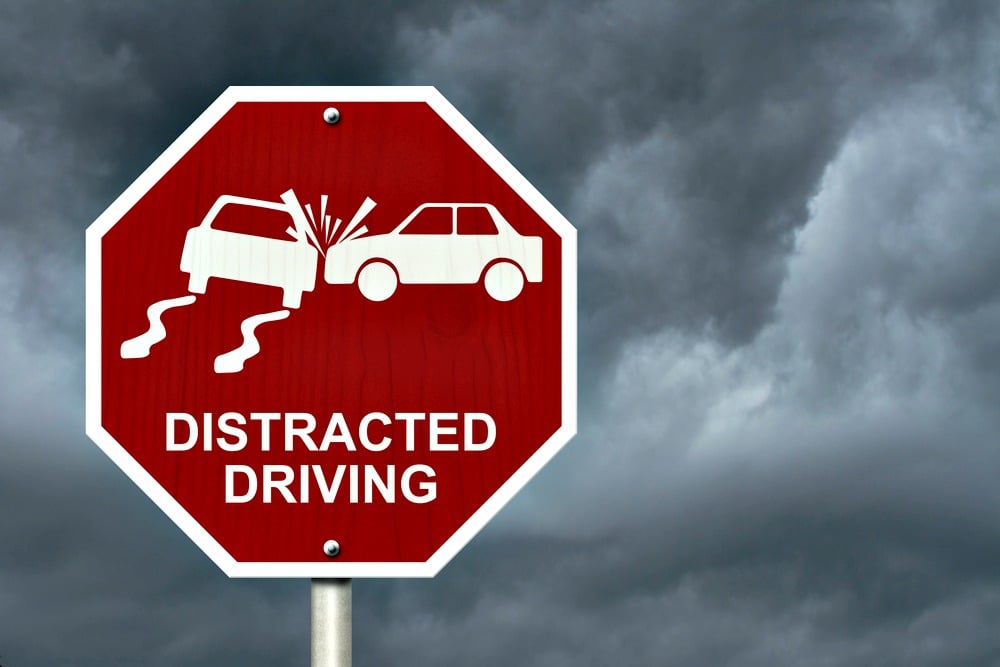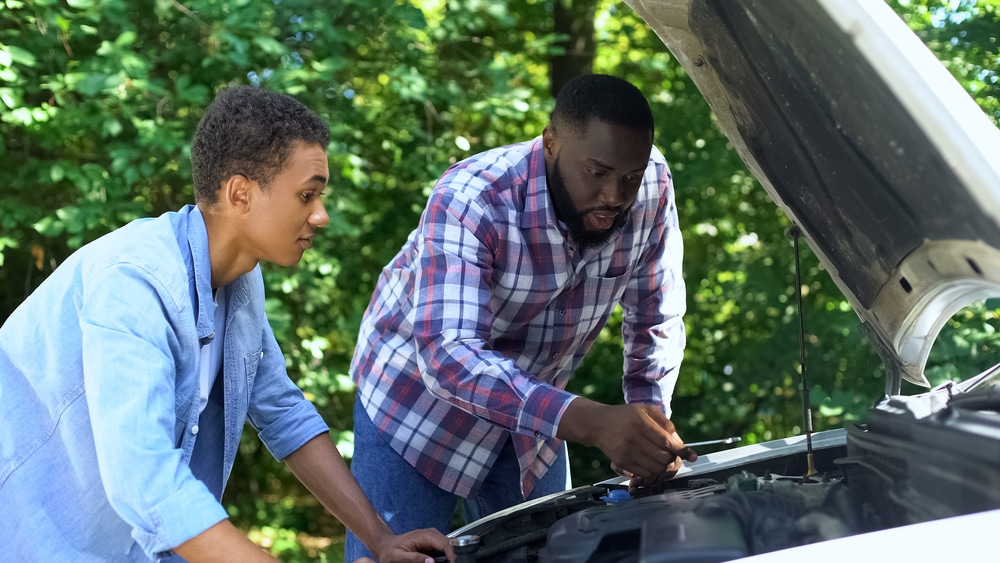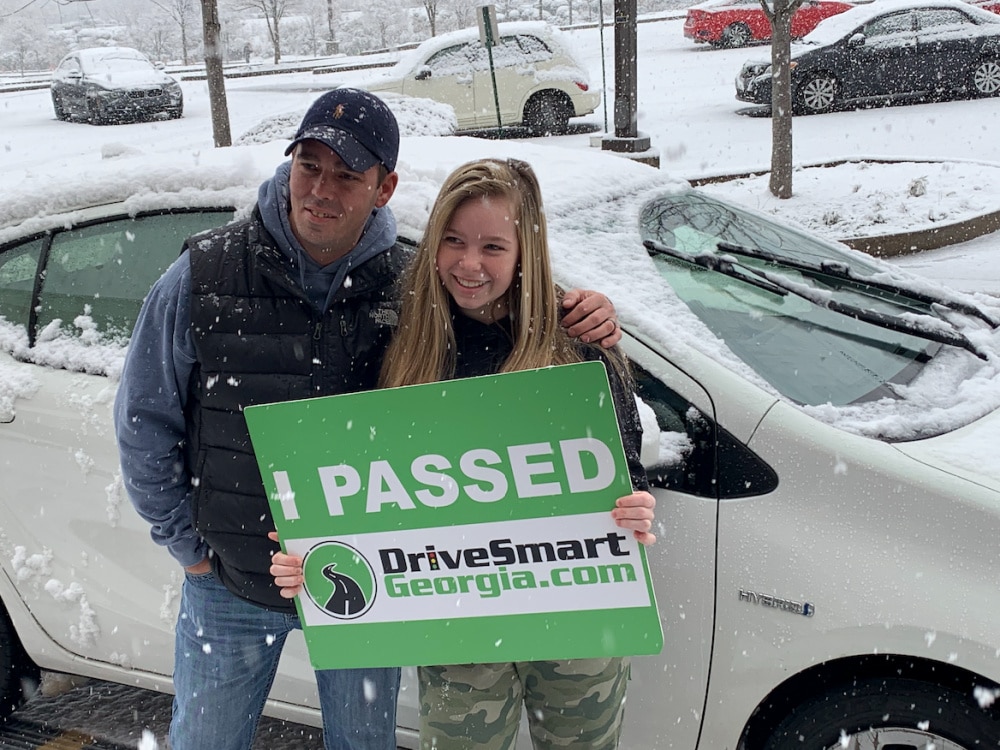Top 5 reasons to worry about teen driver safety

Teen driver safety enters every parent’s mind when their child turns 14 or 15. You may have taught your child how to ride a bicycle but driving a 2,000-lb. moving vehicle down a crowded highway can cause sleepless nights and sweaty palms.
Most new teen drivers are beyond excited to get their driver’s license. In fact, it’s a major milestone in a teenager’s life and the first step to adulthood. However, it’s also a very scary time for concerned parents, like YOU!
So, is your worrying obsessive or do you have a right to be nervous about teen driver safety? Yes, you have the right to worry. Teen driver statistics are quite scary and eye-opening. However, if you start talking about teen driver safety early on during the process of getting a driver’s license, your teen will be a more responsible and safer driver. So, take a deep breath, mom and dad. You’ve got this!
Below are the top 5 reasons why parents worry about teen driver safety.
Reason #1: Teens are three times more likely to be involved in a crash

Past research from the AAA Foundation for Traffic Safety found that for every mile driven, new teen drivers aged 16-17 years old are three times as likely as adults to be involved in a deadly crash.
Solution #1: Teach new teen drivers to “R.E.A.D.”
To combat this scary teen driver safety statistic, AAA recommends that regardless of their age when first learning to drive, new drivers should remember to read the road, by following their “READ” acronym.
- The “R” stands for “right speed for right now” and focuses on how drivers may have to reduce their speed below the speed limit depending on the weather conditions.
- The “E” stands for “eyes up and brain on,” reminding drivers to always scan the road and keep their mind focused on the task at hand.
- The “A” is used to remind drivers to “anticipate their next move” by being aware of other drivers on the road and having a plan to respond to their decisions.
- The “D” stands for “donut of space around their vehicle,” which encourages drives to keep a large amount of space on every side of the vehicle.
Reason #2: Teen brain development and injury accidents

When teens enter puberty, their brains change and effect how they react to stimuli and their environment. Their working memory is not fully developed. So, when it comes to teen driver safety, teens’ reaction time behind the wheel may be slower. This puts them at a higher risk for injuries and accidents. In addition, their perception of risk is diminished, and they have less impulse control than adults do. So, what can a concerned parent do to overcome these obstacles to teen driver safety?
Solution #2: Reduce distractions!
Since there is currently no universal test to determine whether a teen is “ready” to drive, and the states aren’t likely to raise the legal driving age, what can parents do to make their teenage drivers safer behind the wheel? While studies are currently underway to figure out ways to improve working memory development, for now, experts agree the number one way to make teens safer is to reduce distractions.
Driving requires the constant processing of data and hundreds of decisions a minute. Cell phones, other passengers, music in the car—all these and other factors can overload a brain that just isn’t ready to handle that much input. Reducing distractions is currently the best way to help still-developing brains limit the amount of information they must process in order to drive safely.
Reason #3: Inexperience is a main reason for teen driver crashes

Think about it. To become an expert at anything, you need to practice, practice, practice. To ensure teen driver safety, parents need to work with teens to become more experienced and safer drivers.
Solution #3: Set safety rules and consequences
Learning how to drive involves learning how to react to different and potentially dangerous situations. With a cool head and steady hand of guidance, you can work with your teen to gain valuable driving experience. It may be tough, but you can do it!
A good starting point is introducing a Teen Driver Contract, like one by AAA. Before signing it, discuss that unsupervised driving is a privilege that comes with a specific set of rules and regulations.
It’s important to address issues like nighttime driving and the number of passengers allowed in the car. Setting up driving rules and consequences not only emphasizes teen driver safety, but a signed contract between parents and new teen drivers can also add to your own peace of mind.
Below are some examples of safety rules for new teen drivers.
- Check in with a parent every time you drive.
- Do not take unnecessary risks while driving.
- Obey all traffic laws, signs, and speed limits.
- No drinking and driving. Ever.
- No peer passengers in the car for the first six months.
- Eliminate all driving distractions.
The violations and consequences are entirely up to you, the concerned parent. The important things are to get buy-in from new drivers and to always enforce the consequences.
Below are some examples of rule violations and potential consequences.
- Speeding ticket – Lose driving privileges for two months.
- Using cell phone while driving. Lose driving privileges for two weeks.
- Didn’t make all passengers wear seat belts. Lose privileges for one month.
- Lied about where your teen was going with car. Lose driving privileges for one month.}
- Coming home late without calling. Lose driving privileges for two weeks.
- Too many passengers in the car. Lose driving privileges for one month.
- Used alcohol or drugs before driving. Lose driving privileges for three months.
Reason #4: No role model to teach teen driver safety

We know, it may not be your favorite thing, but riding in the car with your teen is essential to develop lifelong good driving habits.
Parents may feel that they rate low in importance to their teens – after social media, friends, sports, and homework. This is not the case. Teens need their parents more than ever as they approach adulthood, especially in helping them avoid risky behaviors.
Solution #4: Make every moment a teachable moment
Teens have been watching their parents’ every move since sitting in their car seat to their recent move to the driver’s seat. If parents model dangerous behaviors while driving, it will be very hard to convince teens not to follow their lead. Parents need to exhibit safe driving and riding behaviors at all times.
Parents can start being role models in road safety by setting and following house rules and always leading by example. This includes not calling or texting teens while they are driving.
TeenDriverSource recommends these tips to be a good role model for teen driver safety.
- No cell phone use while driving – whether hands-free or hand-held – including at stoplights.
- Do not speed.
- Always wear a seat belt, as a driver and passenger.
- Refrain from road rage.
- Do not drive while impaired (drugged, drunk, or drowsy).
- Do not apply makeup, eat, or fiddle with electronics while driving.
- Do not tailgate.
- Be a good passenger – show respect for the driver and do not be a distraction.
Reason #5: Can parents really teach their teens to be lifelong good drivers?

ALL parents are concerned about teen driver safety but some wonder if they can teach their teens to be lifelong good drivers. It’s quite a daunting task and many parents are ill-equipped or not prepared for the overwhelming mission.
Many parents often do the “death grip” when their inexperienced teen driver gets behind the wheel. Others may gasp at every stop or turn. While others yell, “Slow down” ten times during a 5-mile ride. Finally, some nervous parents may close their eyes or make a “squinty” face during lane changes.
Solution #5: Leave the driving to the teen driver safety pros
If you get sweaty palms just thinking about teaching your teen how to drive, have no fear. Drive Smart Georgia’s professional, AAA-approved instructors are the best in Atlanta. Plus, our fleet of vehicles come equipped with an extra brake and accelerator on the instructor’s side – just in case.
Our highly patient instructors will work with your teen driver on essential skills like parallel parking, turnabout, reverse backing, complete stops at all red lights and stop signs, yielding the right-of-way, proper passing, driving posture, and the dangers of following too closely. Because Drive Smart Georgia has the largest practice facility in the city, there’s always room to work on these essential skills at one of our three locations.
In conclusion: Always make teen driver safety a priority
Car crashes is the #1 killer of teens, so it’s important to take the learning to drive process very seriously. The first step is to take a deep breath and try to relax. Yes, knowing that your baby will soon be behind the wheel of an automobile is downright scary.
However, he or she is becoming an independent individual and a new teen driver. As a parent, you SHOULD be concerned about teen driver safety. However, if you follow these tips, your child is well on the road to becoming a lifelong safe driver.
- Teach new drivers to R.E.A.D.
- Reduce all distractions.
- Set safety rules and consequences.
- Make every moment a teachable moment.
- Leave the driving to the teen driver safety pros.
CLICK HERE get our free newsletter and teen driving tips for parents!
Related articles:
- New Georgia Drivers Ed law now applies to 16- and 17-year-old drivers
- Why have teens delayed getting a driver’s license?
- What is Joshua’s Law? A guide for parents to limit teen driver dangers